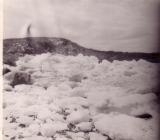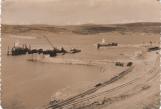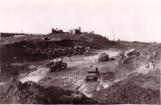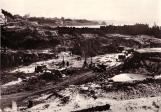1
Hugh MacMillan's house overlooking the area where the Canso Canal would be constructed.1920
Port Hastings, Inverness County, Nova Scotia, Canada
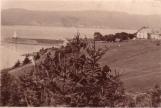
3
BALHACHE POINT, CAPE BRETON ISLAND was to be the location for the Canso Canal.The Canso Canal was constructed as a component of the Canso Causeway to allow uninterrupted passage of marine traffic through the Canso Strait. This was in compliance with the legal requirements of the Federal Navigable Waters Protection Act. A swing bridge was constructed to allow Causeway rail and road traffic across the canal.
5
SITE PREPARATION IN APRIL 1953T.C. Gorman (Nova Scotia) Ltd. from Montreal were the general contractors chosen to build the Canso Canal .They would begin their site preparation in April 1953. Romeo Laroque was the Engineer on the project for T.C. Gorman Ltd.
8
Lighthouse at Balhache Point looking across at Cape Porcupine on mainland Nova Scotia.July, 1953
Canso Canal work site
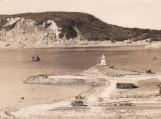
9
Balhache Point, Cape Breton was chosen because of the minimal pumping that would need to be done. It actually cost less to drill, blast and dig the canal through the point than any other option.11
CANAL BLASTED THROUGH - Lennan MacDonald, timekeeper with T.C. Gorman Ltd., explains how the operation started."The canal was actually drilled and blasted out of Cape Breton Island. It wasn't part of the Strait... They put in cofferdams, that's steel sheet piling driven down into bedrock... [then] filled with rock. They kept the water out while they drilled and blasted the muck and then built the canal."
13
CANAL TRENCH BEFORE WALL FORMS - Pictured here is the canal trench before wall forms have been put into place. The road surface where the heavy machinery is will be the floor of the canal. The walls will be poured and anchored into solid rock on the edges of the trench. The workers on the canal project drilled and blasted their way through Balhache Point, creating a lane for shipping traffic.T.C. Gorman driller, Joe Larter of Port Hastings, remembers certain blasts that rivaled operations across the Strait of Canso at Cape Porcupine. "We used to put off some pretty heavy ones on this side. We were blowing down on the north end on the gate pocket. [One driller] got a little mixed up on his powder. We were putting lifters in, 30-footers, and he told us to put ten sticks of powder, peel five... But it was only supposed to be five and five, so it was an extra load. He went up to the little blasting house up there, near the railroad tracks. [All the rock] went up, [and] took the railroad tracks out. The train was waiting to come through."


